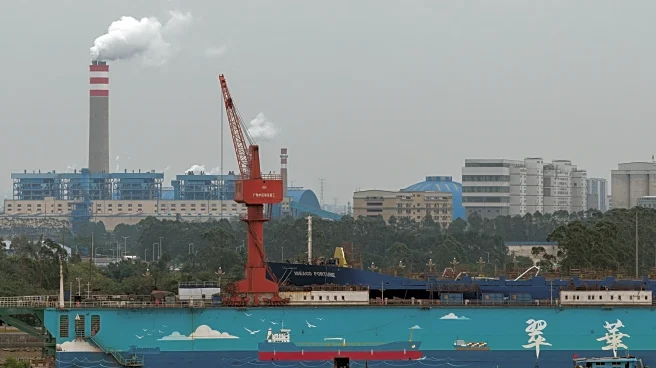What's Happening?
Chanel has inaugurated Espace Gabrielle Chanel, the first public library in mainland China dedicated to contemporary art, located at Shanghai's Power Station of Art. Designed by Japanese architect Kazunari
Sakamoto, the library spans 18,000 square feet and houses over 50,000 books and audiobooks. This initiative is part of Chanel's Next Cultural Producer program, aimed at fostering new ideas in contemporary Chinese craft, architecture, and theater. The library includes an exhibition hall and a terrace overlooking the Huangpu River, and it will host the Archive of Chinese Contemporary Art, preserving and contextualizing art practices in the region.
Why It's Important?
The opening of Espace Gabrielle Chanel marks a significant cultural milestone in mainland China, enhancing access to contemporary art and fostering cross-cultural exchange. Chanel's investment in the arts through its Culture Fund reflects a commitment to supporting innovative practices and expanding public imagination. This initiative could inspire similar projects, promoting cultural engagement and collaboration between international and local artists. The library's focus on contemporary art aligns with global trends in art patronage, emphasizing the importance of preserving cultural heritage while encouraging avant-garde expressions.
What's Next?
Espace Gabrielle Chanel is set to become a hub for cultural activities, offering public programming across various art forms. The library's partnership with the Power Station of Art may lead to further collaborations, expanding its influence in the region. Chanel's ongoing support for cultural institutions suggests potential future projects that could further integrate contemporary art into public spaces. The library's role in preserving Chinese contemporary art practices may attract international attention, fostering dialogue and collaboration between artists and cultural institutions worldwide.
Beyond the Headlines
The establishment of Espace Gabrielle Chanel highlights the growing importance of cultural diplomacy and the role of private entities in supporting public art initiatives. Chanel's involvement in mainland China reflects broader trends in global art patronage, where luxury brands increasingly engage in cultural projects to enhance their social impact. This initiative underscores the potential for art to bridge cultural divides and promote mutual understanding, contributing to a more interconnected global community.














